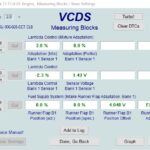VCDS (VAG-COM) HEX-CAN diagnostic tools have been a staple for Volkswagen and Audi owners and mechanics for years. However, recent changes have raised concerns about the longevity and future compatibility of older interfaces, especially in light of the Vcds Vag-com Hex-can 15.7.1 software update. This article addresses these concerns and explores the reasons behind the hardware changes.
Addressing Legacy Hardware Concerns
While an initial investment of $350 for a HEX+CAN interface in 2014 was a significant outlay, it provided reliable service for several years. The concern now lies with the introduction of newer vehicle models (post-2018) requiring new hardware and software, rendering older interfaces “legacy.” This understandably raises questions about the return on investment and the long-term viability of these tools. The question remains: will the new HEX interface be supported for a sufficient period, such as 10 years?
More critically, concerns arise regarding the dependence on Ross-Tech’s servers for functionality. Should the company cease operations, or servers become inaccessible, the fear is that the tool becomes useless. Older HEX+CAN interfaces, with software versions like VCDS 18.2, are not dependent on constant server connectivity and will likely function on older vehicles indefinitely, even without manufacturer support. This contrasts sharply with many modern diagnostic tools requiring online authentication or continuous updates, rendering them unusable if the manufacturer disappears.
Why the Shift to New Hardware?
The transition to a new HEX interface for post-2018 Volkswagen and Audi vehicles likely stems from evolving vehicle technology. Newer models incorporate advanced communication protocols and security measures that older interfaces may not support. This is a common trend across the automotive industry, driven by increased complexity in vehicle electronics and the need for enhanced security against unauthorized access.
For instance, the move towards protocols like SOME/IP (Scalable service-Oriented MiddlewarE over IP) and the increasing use of Ethernet-based communication within vehicles necessitates hardware capable of handling these more demanding data transfer requirements. Older interfaces designed for CAN (Controller Area Network) may lack the necessary bandwidth or processing power to effectively diagnose and interact with these newer systems. Additionally, enhanced security measures within vehicle networks may require updated encryption and authentication protocols that older interfaces cannot accommodate.
Ensuring Your Investment
While the requirement to upgrade hardware can be frustrating, understanding the underlying technological advancements provides context. Seeking assurance from Ross-Tech regarding long-term support for the new HEX interface is crucial. It’s also vital to inquire about offline functionality in case of server downtime or company closure.
The shift to newer hardware highlights a broader trend in the automotive aftermarket. As vehicles become increasingly sophisticated, diagnostic tools must also evolve to keep pace. Balancing the initial investment cost against the expected lifespan and long-term functionality is essential for any professional or enthusiast investing in diagnostic equipment. Choosing tools with a proven track record of reliability and manufacturer support is crucial for protecting your investment and ensuring continued access to vital diagnostic capabilities for years to come. The VCDS system, while requiring updates, remains a robust and comprehensive platform for VAG vehicle diagnostics.

